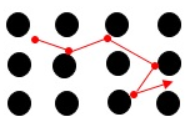Ask questions which are clear, concise and easy to understand.
Ask QuestionPosted by Priya Dharshini 6 years, 2 months ago
- 5 answers
Priya Dharshini 6 years, 2 months ago
Aman Kumar 6 years, 2 months ago
Posted by Harsh Maurya 6 years, 2 months ago
- 11 answers
Tanvi Toor 6 years, 2 months ago
Harshit Verma 6 years, 2 months ago
Tarun Kumar 6 years, 2 months ago
Aman Kumar 6 years, 2 months ago
Srishti Choudhary ✍⏳ 6 years, 2 months ago
Priya Dharshini 6 years, 2 months ago
Ďãřşháñăã Yadav ? ? ? 6 years, 2 months ago
Posted by Gaurav Chaudhary 6 years, 2 months ago
- 5 answers
Harshit Verma 6 years, 2 months ago
Arjit Mailk 6 years, 2 months ago
Priya Dharshini 6 years, 2 months ago
Ďãřşháñăã Yadav ? ? ? 6 years, 2 months ago
Ranodeep Banerjee 6 years, 2 months ago
Posted by Renu Verma 6 years, 2 months ago
- 2 answers
Pankaj Kumar 6 years, 2 months ago
Posted by Tarun Shukla 6 years, 2 months ago
- 5 answers
Avantika Tayal 6 years, 2 months ago
Priya Dharshini 6 years, 2 months ago
Posted by Preetam Jena 6 years, 2 months ago
- 2 answers
Harshit Verma 6 years, 2 months ago
Avantika Tayal 6 years, 2 months ago
Posted by Jahnavi Joshi 6 years, 2 months ago
- 4 answers
Jahnavi Joshi 6 years, 2 months ago
Posted by Nikhil Jaat1234 6 years, 2 months ago
- 1 answers
Posted by Anjali Kumari 6 years, 2 months ago
- 1 answers
Yogita Ingle 6 years, 2 months ago
A wavefront is defined as a surface of constant phase. A wavefront is the locus of all points in the medium that have the same phase.
The ray, at each point of a wavefront, is normal to the wavefront at that point. The ray indicates the direction of propagation of wave while the wavefront is the surface of constant phase.
Posted by Devaka 115 6 years, 2 months ago
- 3 answers
Řøhăň Řąjpůť ✌️✊ 6 years, 2 months ago
Ďãřşháñăã Yadav ? ? ? 6 years, 2 months ago
Posted by Adavya Kayasth 6 years, 2 months ago
- 8 answers
Ďãřşháñăã Yadav ? ? ? 6 years, 2 months ago
Ɽøⱨł₮ ₲Ʉ₱₮₳ 6 years, 2 months ago
Posted by Kalpana Jha 6 years, 2 months ago
- 1 answers
Pankaj Kumar 6 years, 2 months ago
Posted by Rajeev Pandit 6 years, 2 months ago
- 4 answers
Shivam Chaurasia 6 years, 2 months ago
Rajeev Pandit 6 years, 2 months ago
Posted by Adavya Kayasth 6 years, 2 months ago
- 2 answers
Ɽøⱨł₮ ₲Ʉ₱₮₳ 6 years, 2 months ago
Posted by Kailash Singh 6 years, 2 months ago
- 0 answers
Posted by Rajat Barwar 6 years, 2 months ago
- 2 answers
Rajeev Pandit 6 years, 2 months ago
Posted by Sunidhi Sahotra 6 years, 2 months ago
- 6 answers
Shivam Chaurasia 6 years, 2 months ago
Shreya Dixit 6 years, 2 months ago
Rajeev Pandit 6 years, 2 months ago
Yogita Ingle 6 years, 2 months ago
Electric field lines are the parth traced by unit positive charge when left free in electric field and tangent to field lines gives the direction of electric field.So if they will form close loops then the tangent at any point will direct in different directions which is not possible.Also, the unit positive charge moves only due to force of repulison and attraction and as a result traces only defintie path not circular path.
Uzma Afroz 6 years, 2 months ago
Posted by Praveen Vishwakarma 6 years, 2 months ago
- 0 answers
Posted by Sarbjit Singh 6 years, 2 months ago
- 1 answers
Sia ? 6 years, 2 months ago
As we know, {tex}\Delta{/tex}L = {tex}\frac{FL}{AY}{/tex}, {tex}\frac{L_A}{L_B}{/tex} = {tex}\frac{1}{2}{/tex} and {tex}\frac{r_A}{r_B}{/tex} = {tex}\frac{1}{2}{/tex}
[{tex}\therefore{/tex} the wires {tex}A\ and\ B{/tex} are pulled by the same force and they are made up of same material, hence, {tex}F_A = F_B = F, = Y_A = Y_B = Y{/tex}]
{tex}\frac{\Delta L_A}{\Delta L_B}{/tex} = {tex}\frac{L_{A}}{\pi r_{A}^{2}} \times \frac{\pi r_{B}^{2}}{L_{B}}{/tex}
{tex}\frac{\Delta L_{A}}{\Delta L_{B}}{/tex} = {tex}\frac{L_{A}}{L_{B}} \times\left(\frac{r_{B}}{r_{A}}\right)^{2}{/tex}
{tex}\frac{\Delta L_{A}}{\Delta L_{B}}{/tex} = {tex}\frac{1}{2} \times\left(\frac{1}{2}\right)^2{/tex}= {tex}\frac{1}{2}{/tex}
{tex}\frac{\Delta L_{A}}{\Delta L_{B}}{/tex}= {tex}\frac{1}{8}{/tex}
Posted by Jaskaran Singh 6 years, 2 months ago
- 1 answers
Navjot Kaur 6 years, 2 months ago
Posted by Jaskaran Singh 6 years, 2 months ago
- 1 answers
Sia ? 6 years, 2 months ago

No, the drift speed of electrons is superposed over the random velocities of the electrons and they move in zig- zag path.
Posted by Anushka Sen?? 6 years, 2 months ago
- 1 answers
Posted by Pawan Kumar Mahatha 6 years, 2 months ago
- 2 answers
Shivam Chaurasia 6 years, 2 months ago
Posted by Abhishek Tyagi 6 years, 2 months ago
- 2 answers
Ankit Moudgill 6 years, 2 months ago
Rajat Barwar 6 years, 2 months ago
Posted by Abhishek Tyagi 6 years, 2 months ago
- 1 answers
Rajat Barwar 6 years, 2 months ago
Posted by Abhishek Tyagi 6 years, 2 months ago
- 1 answers
Sia ? 6 years, 2 months ago
Polar dielectrics
A polar molecule which has permanent electric dipole moment ({tex}\vec p{/tex}) in absence of electric field are called polar dielectrics. In these substances the possibilities of centre coinciding of positive and negative charges are zero. Polar molecules are randomly oriented. e.g. Water, alcohol, HCl, NH3.
Non-polar dielectrics
A non-polar molecule having zero dipole moment in its normal state are called non-polar dielectrics. In these substances the centres of both positive as well as negative charges coincide.
Non-polar molecules have symmetrical shapes. e.g. Any non-conducting material.

myCBSEguide
Trusted by 1 Crore+ Students

Test Generator
Create papers online. It's FREE.

CUET Mock Tests
75,000+ questions to practice only on myCBSEguide app
 myCBSEguide
myCBSEguide
Ďãřşháñăã Yadav ? ? ? 6 years, 2 months ago
0Thank You